The Real History Behind the Bible Story of the Wise Men
You may have sent and received dozens of Christmas cards with their images. Yet, how much do you really know about the Three Wise Men? This page is unique in telling the Magi’s story through their own culture from Persia (Iran). Hopefully, you will learn much about the Magi, ancient Persia and their contributions to us.
The Oxford Dictionary of Philosophy calls Zarathustra “the world’s first philosopher.” He lived between 3,000-5,000 years ago. His songs are in the ancient Gathic (Avestan) language, a sister language related to Sanskrit. Many scholars believe that Zarathustra founded the world’s first monotheistic. They find echoes of his words in Judaism, Christianity and Islam. Zoroastrians were also known for their devotion to truth and wisdom. They place a strong emphasis on protecting the environment.
There are many web pages on the Internet which claim to be written by “Magi” – but almost none of them are. Few Zoroastrians use the term “magi” today, preferring the name Ashavans, (followers of truth). However, here you can read the real history of one of the Bible’s best known stories. Where did they Magi come from? Persia (Iran)? Babylon? Did they follow a real star, or is this just a myth? Why are they in Matthew’s gospel and no other? Is there a link between the early apostles of Jesus and the missionaries of Zarathustra (called Zoroaster by the Greeks). Followers of his teachings today often call themselves “Zarathustrians”.
Is it just a coincidence that the “Three Wise Men” called God by the name of Ahura Mazda (“Wise God”)? It does not mean “the god of wisdom”, as if there were more than one deity. In it’s original language the words simply mean “Wise God”. Nor does Ahura Mazda have a gender. In the original language (Gathic and Avestan) the word “Ahura” is male oriented and means “lord”. However, the word “Mazda” is associated with the female gender and means wisdom. The name Ahura Mazda contains both male and female attributes. Women are listed among Zarathustra’s earliest followers.
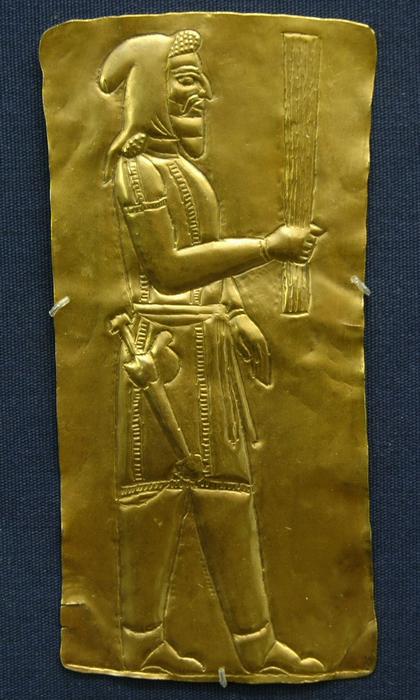
The Wise Men were Priests & Astronomers – not Kings or Astrologers
The Magi’s story is one of the best loved tales in the Bible. It is possible we would not have the gift giving at Christmas today without the story of their gifts for the young Jesus. The Magi bring the first Christmas gifts. But, today many Christians wrongly believe that the Magi were “Kings”. Let’s examine how this idea came about.
Early Christian writers said the Magi were Zoroastrian priests (see this Catholic Bible history link). Not a single early Church writer calls the Magi “kings.” Their journey from the East, following a magical star is in Chapter two of Matthew. Matthew’s gospel was written to Jewish followers. For the Zoroastrian Magi to recognize Jesus would add to the Hebrew belief of Jesus as the Messiah. It was widely believed by the Jews that Zoroastrians prophesied three saviors to be born. The three gifts they bore may represent the gifts of “Good Thoughts, Good Words and Good Deeds” – the ancient Zoroastrian motto.
To see the Magi as “Kings” is to completely miss the importance of their visit to Jesus. It is the first time in the Christian Bible that Jesus is recognized as a “Savior.” Almost any 1st Century Jew would have understood the significance of the Magi’s visit. When we repeat the myth of them being kings we are taking away their importance in Mathew’s gospel. A good website about the magi of the Bible is Wikipedia’s page
Even if the Magi visit is completely legend Matthew has created a brilliant literary twist for his 1st century audience. in first chapter Matthew records Jesus’ full genealogy, back to King David. Today our eyes gloss over the long genealogies of Chapter One. Yet, these were vitally important to Matthew’s audience. He leaves no doubt about his beliefs on who Jesus was and what his mission was to be. The Magi are in Chapter Two confirming what Matthew states in Chapter One – that Jesus is the future ruler and savior of the world. To change the Magi and make them “kings” takes away the power of the opening book of the gospels.
Mathew’s first century audience would likely have laughed at a story that made the Magi into kings. However, when the kings story arises, nearly 600 years after the death of Jesus, the Magi were no longer respected – and neither were the Jews. Once Christianity became the official religion of the Roman Empire it became important to full full the Bible verse which says that all the kings of the earth would bow before Jesus. But, no early church historian taught that the Magi were kings rather than traveling Zoroastrian priests or missionaries. The idea of the three wise men being kings developed much later after Christianity became the religion of the Romans.
The Magi may have even been the first missionaries. It is possible that Jesus’ Great Commission at the end of Matthew is based on the missionaries Zarathustra sent out as there is little history of missionaries in Judaism or any ancient ethnic/tribal faith. Only Zarathustra’s Magi were sent to all nations to teach a better way of living. There had never been anything like the Magi in the ancient world.
Let’s read the Gospel of Matthew as he intended it and as his first readers read it. The Magi were priests and astronomers. They were NOT alchemists or magicians (although the term “magic” comes from Magi). However, the word Magi actually means “generous” or “benefactor” – as in the word “magnanimous.” The Magi were traveling missionaries – their faith called for them to seek “saviors” and to teach that each of us is a potential savior of our world. The word “savior” had a different meaning to the Magi as it does to today’s Christians.
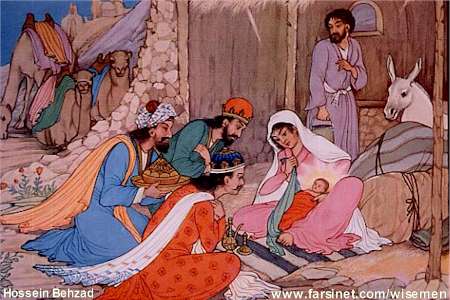
Zarathustra’s Missionaries from Bactria, Afghanistan
Zarathustra was exiled out of his own tribe when he began to compose his now famous hymns (Gathas). He spent ten years wandering until finding support from King Vishaspa of ancient Bactria (modern Afghanistan.) Zarathustra taught that each of us is a “savior” of the world in the struggle between right and wrong. Each of us is responsible in choosing our own path, for the better or the worse.
The idea of individuals being free to choose their faith was revolutionary. He taught that we are to choose our beliefs based on their truth and goodness at a time when Free Will was almost unheard of. He taught an ethical dualism within the mind. Later priests expanded the ethical dualism of the Gathas (Hymns) into a cosmic battle between good and evil. Scholars have identified seventeen hymns that are believed to be by Zarathustra himself. They are organized in an easy to memorize sequence where one song logically follows another. It was a collection designed to be taught to the people. He created the first known group of missionaries to take the tools and teachings outside of their home area and tribe.
Zarathustra’s original Magi were astronomers, not astrologers. There is nothing about astrology or predicting the future in either his Gathas or early Zoroastrian writings. However, after the destruction of the faith and most of its written texts, by Alexander the Great in 333bc the Magi’s ancient lineage was broken. This allowed other priests in other areas, such as Babylon and Assyria to call themselves “Magi”. There was wide diversity among the Magi. These later priests changed the liturgy and beliefs of Zarathustra, often blending them with Egyptian and Greek elements. These priest also heavily relied on astrology and prophesy to predict the future. It is they who are often written about in the Bible. Not all Magi were strict followers of Zarathustra, although the Magi in Matthew’s gospel probably were.
Zarathustra may have been killed in his fire temple and Bactria overrun by a large tribe of nomadic horse warriors – possibly of the Turanian tribe. Zarathustra gave people the tools they needed to begin agriculture and settled communities, which the horse warriors attacked. Imagine the Catholic Church’s priesthood if the Vatican were to be destroyed – or the plight of the Jewish priests when the temple was destroyed in Jerusalem. The destruction of Bactria scattered the Magi around the ancient world. In each locality they picked up local customs, technologies and even deities. The later Zoroastrian writings include a plethora of other worldly creatures that are absent in Zarathustra’s original hymns.
The Magi were educated in Bactria (modern Afghanistan) and sent out as missionaries. Visits from the Magi were a time of celebration. They often brought new sciences and ways of building. The Magi began at a time when Zarathustra’s people were still nomads, violently raiding villages. They taught a way of peaceful living in settled agricultural communities, in harmony with nature. The Magi could have traveled from Persia or Babylon or almost anywhere in the Middle East.
There is some debate over whether Zoroastrian beliefs influenced Christianity – or if Jewish and Christian ideas influenced Zoroastrianism. Zarathustra’s hymns predate Christianity by hundreds, perhaps thousands of years. The story of the Three Magi may help answer this debate. The story of the Magi is NOT found in any Zoroastrian text. Zoroastrians today claim little knowledge of the Magi story.
The story of the three Magi is only found in Matthew’s canonical gospel. Yet, the Magi story is an early Christian belief. There are ancient drawings of the Magi on the walls of the catacombs under Rome made by Christians. This story may be in Matthew’s text, written to early Jewish Christians, because of the high respect the Jews had for the Persian Magi.
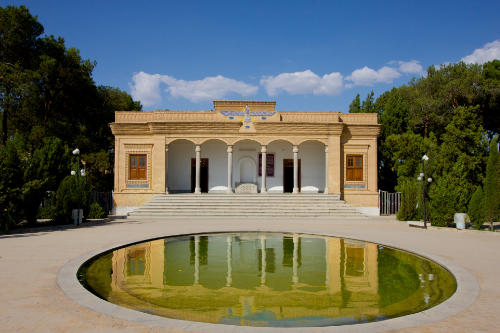
The Three Magi in the Bible
Below are three good links about the three Wise Men. Their reputed bones are in Cologne Germany, taken from Persia in 330 AD by the Romans. However, Persian scholars believe their graves lie near Tehran, Iran and were visited by Marco Polo in 1270 AD.
1910 Catholic Encyclopedia about the Magi, very authoritative
http://www.newadvent.org/cathen/09527a.htm
Excellent Page About the Magi, Lots of History, Debunks Myths
http://en.wikipedia.org/wiki/Biblical_Magi
Art – See Beautiful Classic Art of the Magi & the Star
http://www.textweek.com/art/magi.htm
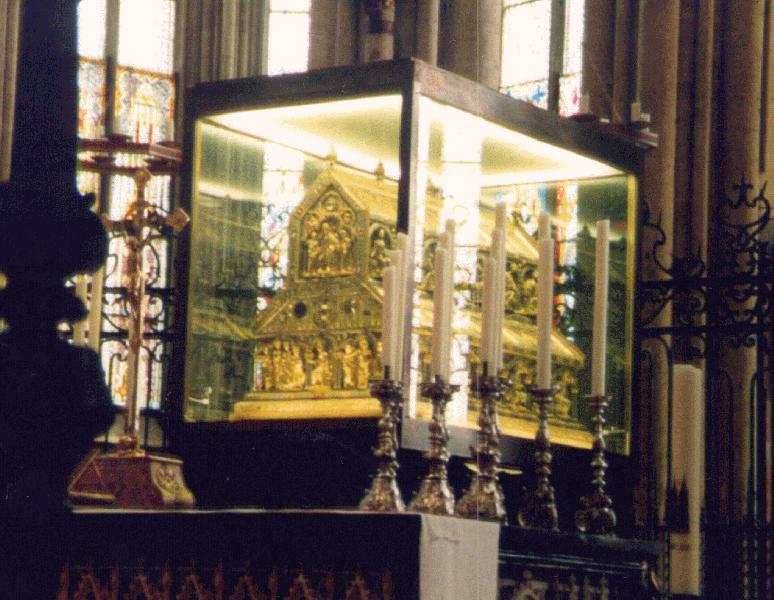
What was the Star of Bethlehem?
For centuries astronomers and priests have debated the Star of Bethlehem. Did the Three Wise Men really follow a star to find Jesus? If so, there should be some astronomical record of such a heavenly event. Is it just a fable?
Excellent article from Wikipedia
https://en.wikipedia.org/wiki/Star_of_Bethlehem
Online Book by Astronomer & Minister, Very Good Historical Details
http://askelm.com/star/index.asp
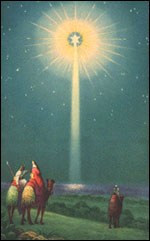
Persia in the Bible, Cyrus Frees the Jews in Babylon
Persians and Jews once had a tradition of respect and support. The Persian king, Cyrus the Great freed the Jews from their captivity in Babylon in 537 bc. His decree freeing the Jews is the world’s first human rights declaration. You can view it at the link below. This excellent website is by Iranians.
Persian King Cyrus in the Bible, was Israel’s Messiah & God’s “Anointed One”
http://www.farsinet.com/cyrus/index.html
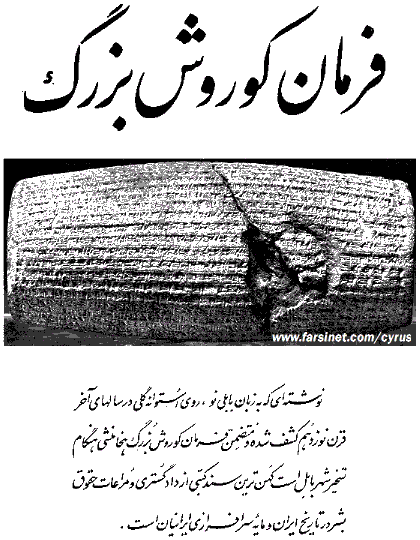
The Infancy Gospel of the Savior, Circa 300-600 AD
The Magi and Zarathustra are also mentioned in the non-canonical Arabic Gospel of the Infancy of The Savior (http://www.newadvent.org/fathers/0806.htm) in section 7 of this early gospel it reads:
7. And it came to pass, when the Lord Jesus was born at Bethlehem of Judea, in the time of King Herod, behold, magi came from the east to Jerusalem, as Zeraduscht (Zoroaster) had predicted; and there were with them gifts, gold, and frankincense, and myrrh. And they adored Him, and presented to Him their gifts. Then the Lady Mary took one of the swaddling-bands, and, on account of the smallness of her means, gave it to them; and they received it from her with the greatest marks of honor.”
The Magian Fellowship
Article By Dr. Ali Jafarey, The Zarathushtrian Assembly
Around Christmas, we hear about the “Wise Men of the East,” also known as the Magi or Magians, who followed a star to Bethlehem to pay their respects to infant Jesus. They brought with them gold, frankincense, and myrrh as presents.
Let us look up the dictionary. “Magus, plural Magi, [Latin from Greek Magos — more at magic] 1 a: a member of a hereditary priestly class among the ancient Medes and Persians b: often capital: one of the traditionally three wise men from the East paying homage to the infant Jesus 2: Magician, sorcerer” (Webster New College Dictionary). An encyclopedia has more: ” followers of Zoroaster, the Persian teacher and prophet. Gradually, the religion of the magi incorporated Babylonian elements, including astrology, demonology, and magic.” (Funk & Wagnalls New Encyclopedia, 1983) The word “Magi” is, therefore, linked with Zoroastrianism.
It is “Maga” in the Zoroastrian scripture. “Maga” in Avesta and “magha” in Sanskrit is derived from “maz/mah” meaning “to be great, magnanimous, liberal, generous.” Maga/magha means “greatness, magnanimity, generosity.” The adjective is magavan/maghavan, “great, liberal, generous, magnanimous.” The Sanskrit adjective is used mostly in honor of Indira, the Rigvedic god of clouds and rains, who was “generous” in bringing riches to the Vedic Aryans by driving drought away.
Zarathushtra uses Maga for the “Fellowship” he founded through his existential philosophy and “Magavan” for every member of the “Magnanimity.” The two words — Maga and Magavan — are mentioned for eight times in the Gathas (Maga: Songs 2:11, 11:14, 16:11, 16:16, 17.7 (twice), and Magavan: 6:7, 16:15). Zarathushtra calls his Maga as “maz, great” in two Gathic stanzas — Maz Maga, the Great Magnanimity, Great Fellowship (2:11 and 11:14).
The gist of these stanzas is that the Great Fellowship is based on its smallest unit – family – forming unity in “weal and woe.” The units make up the entire living world. It teaches radiant happiness that reaches all. A person who consults righteousness, uses his/her good mind, and lives a life of progressive peace, qualifies to be a member of the Fellowship.
In the beginning Zarathushtra prays to Ahura Mazda (the name means Wise Lord) to lead him to expand his newly founded Fellowship. Later, he is joined by King Vishtaspa and his sagacious team, and the work to promote the “Great Fellowship” gains a great momentum. Zarathushtra’s “best wishes” come true when he watches the Fellowship grow far and wide.
In the west, the professional priests of Median “nation” were clever enough to retain their caste (“tribe” in the words of Herodotus), and at the same time call themselves Magu, the Median/Old Persian pronunciation of Magava(n). Magu (Magush as nominative singular masculine) was Greek into Magos with Magi as its plural.
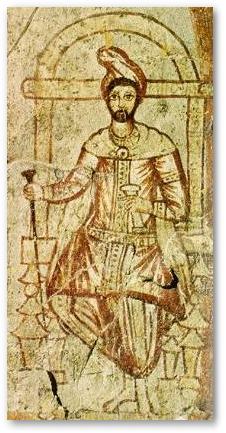
Maga/Magos/Magi = Magnanimous/Generous
The word “magic” and other cognates, derived from Magu, show how highly learned and advanced were the Magi in their knowledge and crafts. They made non-Iranians wonder and imagine that they were watching “sorcerers” at work. This could happen to any backward people if they see modern scientific implements used by the advanced. We have many stories how people looked first at wireless, telephone, locomotive engine, train, and other inventions and imagined them to be magic and “products of the Devil.” Some still do!
With the Magi’s name and fame in mind, all the priests of the Babylonian and Assyrian priests of other creeds, all serving within the great Persian Empire for centuries, took the name “Magi” for themselves. It is simple to understand the rest of events, even the Three Wise Men who are said to have visited and paid their respects to the newborn Jesus. Every Magus in what we call Middle East was not Zoroastrian. He was just a “priest.”
Even the very word “priest,” shortened from “presbyteros,” literally “elder,” was originally applied to “a member of the governing body of an early Christian Church.” Today most of the religious orders, including Traditionalist Zoroastrians, have “priests” for themselves. We have a few more examples in Guru, Yogi, and Mogul. Arabic “Maja»s” occurs in the Quran. It says: “Lo! Those who believe [Muslims], and those who are Jews, Sabeans, Christians, and the Magians [all four counted placed together as the People of Book], and those who are polytheists — Lo! Allah will decide between them on the Day of Resurrection (22:17).”
Click Here For More from Dr. Jafarey & The Zarathustrian Assembly
What about Fire?
Contrary to popular myth, Zarathushtrians do not “worship” fire.
Here is a picture of the sacred fire at the Dar-e-Meher in San Jose Ca.
Note how shiny everything is – to better reflect the light.
Fire is sacred because it separates humans from animals.
Both people and animals can think, reason and make tools.
But only human beings can control fire.
Zarathushtrians believe in advancing civilization.
Fire was technology given to us. It is a symbol – but not God.
It’s like the wood of crucifix. Christians do not worship the wood.
The purpose of this page is to spread awareness of the contributions of ancient Persia (modern Iran.)
May there be peace on earth and good will towards all.
I am indebted to many Zoroastrian scholars who have provided me their research and good thoughts. In particular, Ali Jafarey, Dina McIntyre, Rebecca Cann, Ron Delavega and everyone at Dar-e-Meher Fire Temple in San Jose, California have been good friends and teachers to me …. Steve Williamson, © 2007
